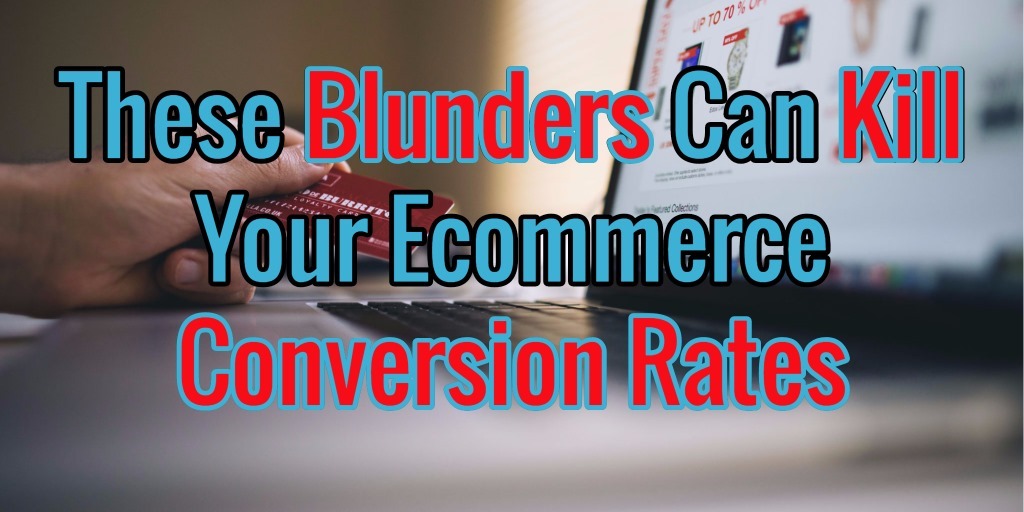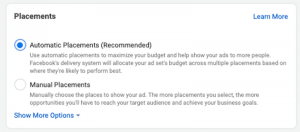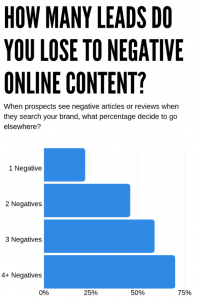
Building an ecommerce website by itself is not terribly difficult. Building one that customers fall in love with takes a serious effort. More often than not, it involves a great deal of stress, hairpulling, split testing, and trial and error.
It all comes down to how people view and interact with your site. While each platform is different, there are a lot of common threads successful websites share. Also, and there are a lot of similar mistakes that the unsuccessful ones tend to make.
Ecommerce is all about consistently working to boost conversion rates. Regardless of how much traffic your website pulls in, it is worthless if no one is buying. While some ecommerce platforms require a full revamp, some just require minor fixes. Let’s examine some of the most common blunders online business make that can negatively impact their bottom line.
No Clear Value Proposition
The value proposition is what an entire ecommerce website is built around. Basically, it is the thing that answers the question of why the customer should buy from you. This should be displayed loud and clear on your homepage.
Having a clear, convincing value proposition is what separates you from your competitors. The unfortunate truth of the matter is that a lot of online stores struggle with making this concept crystal clear. In turn, they have difficulty communicating what it is they sell.
So what makes up a good value proposition? There are a several key ingredients.
1. A headline that explains why your product or service is worth buying. This is the promise of value that you will add to the life of the customer.
2. Copy that explains in further detail why your business is the best possible choice. This is your chance to really set yourself apart from your competition and convey why you are superior.
3. Imagery that captivates and showcases your business in a way that makes users want to buy it.
4. Call to action.

Uber does a great job in making their business simple to understand and to use. This value proposition on their homepage covers all the bases and explains why they deserve your business.
A value proposition is all about clarifying what makes your business an innovative solution to your customer’s problems or concerns. Take your time with this. It can make or break your online business.
A Sluggish Website
The rise of the internet has given people exposure to more information and content than they know what to do with. An unfortunate result of this phenomenon is a huge lack of patience. In fact, 74% of consumers will leave a website if it takes more than five seconds to load.
Keep in mind, if a user cannot get what they want from your website, they will have no problem clicking their way to a competitor. For this reason, a slow website could be fatal for your conversion rates.
While there are many root causes of slow websites, one of the most common culprits is the hosting platform. If you have tried everything else to optimize your speed such as compressing images, shortening forms, and ditching unnecessary plugins, just find a new hosting option (because there are loads available) that’s most suitable to the CMS you used to build your website. For example, if you use WordPress, dig through a comparison of the fastest WordPress compatible hosting services and make your decision without delay.
A speedy website is the key to keeping visitors on your page so you can guide them down the conversion funnel. A few extra dollars spent to keep your loading times down is well worth it.
Subpar Product Descriptions
Displaying good, informative product descriptions are instrumental in aiding purchasing decisions. Generally speaking, shoppers like to have all the information they can get on a product or service before clicking the “buy” button. The reader should have no further questions whatsoever after completing their research on your website.
Product descriptions can be leveraged in a several ways that go beyond just boosting conversion rates. They can do wonders to increase your SEO efforts by using strategic keywords or phrases, as well as showcasing your brand story to give the readers a taste of your unique personality.
Take a look at this example from Method:
Everyone knows how hand soap works. However, they go above and beyond in their product descriptions to demonstrate what sets them apart from their competitors using their witty brand voice. Each of their product listing is a value proposition in itself as it explains how the item improves the lives of their customers on a personal level.
In addition to stellar copy and images, a great thing to include in product descriptions are reviews. Reviews can do a lot to build credibility as it provides an insight from a third party. Products with customer reviews tend to have 10% higher conversion rates than ones without.
Well-written and developed descriptions are one of the key factors that separates the average online stores from the spectacular ones.
Final Words
Ecommerce is an entity that requires an extremely close attention to detail and a mind constantly looking to improve. Mistakes and blunders are inevitable along the road. Each one should come with a lesson and a plan of attack. Be sure you are always split testing the elements of your platform to identify these mistakes. With a critical eye and a bit of innovation, simple mistakes like these will be a thing of the past and the lesson gained will play a big role in taking your online store to the next level.
These Blunders Can Kill Your Ecommerce Conversion Rates
The post These Blunders Can Kill Your Ecommerce Conversion Rates appeared first on Search Engine People Blog.
Search Engine People Blog(37)








